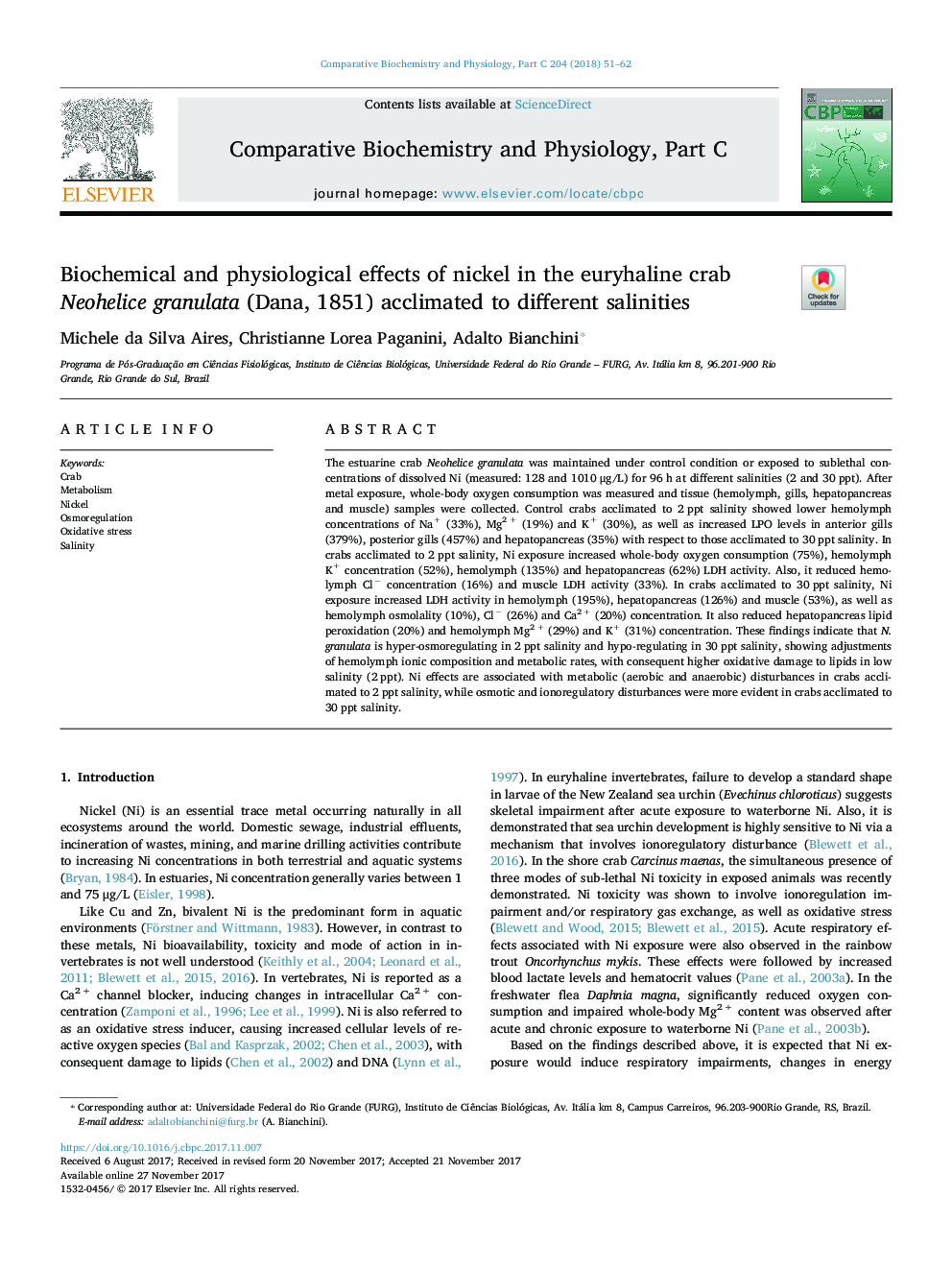| Article ID | Journal | Published Year | Pages | File Type |
|---|---|---|---|---|
| 8319050 | Comparative Biochemistry and Physiology Part C: Toxicology & Pharmacology | 2018 | 12 Pages |
Abstract
The estuarine crab Neohelice granulata was maintained under control condition or exposed to sublethal concentrations of dissolved Ni (measured: 128 and 1010 μg/L) for 96 h at different salinities (2 and 30 ppt). After metal exposure, whole-body oxygen consumption was measured and tissue (hemolymph, gills, hepatopancreas and muscle) samples were collected. Control crabs acclimated to 2 ppt salinity showed lower hemolymph concentrations of Na+ (33%), Mg2 + (19%) and K+ (30%), as well as increased LPO levels in anterior gills (379%), posterior gills (457%) and hepatopancreas (35%) with respect to those acclimated to 30 ppt salinity. In crabs acclimated to 2 ppt salinity, Ni exposure increased whole-body oxygen consumption (75%), hemolymph K+ concentration (52%), hemolymph (135%) and hepatopancreas (62%) LDH activity. Also, it reduced hemolymph Clâ concentration (16%) and muscle LDH activity (33%). In crabs acclimated to 30 ppt salinity, Ni exposure increased LDH activity in hemolymph (195%), hepatopancreas (126%) and muscle (53%), as well as hemolymph osmolality (10%), Clâ (26%) and Ca2 + (20%) concentration. It also reduced hepatopancreas lipid peroxidation (20%) and hemolymph Mg2 + (29%) and K+ (31%) concentration. These findings indicate that N. granulata is hyper-osmoregulating in 2 ppt salinity and hypo-regulating in 30 ppt salinity, showing adjustments of hemolymph ionic composition and metabolic rates, with consequent higher oxidative damage to lipids in low salinity (2 ppt). Ni effects are associated with metabolic (aerobic and anaerobic) disturbances in crabs acclimated to 2 ppt salinity, while osmotic and ionoregulatory disturbances were more evident in crabs acclimated to 30 ppt salinity.
Related Topics
Life Sciences
Biochemistry, Genetics and Molecular Biology
Biochemistry
Authors
Michele da Silva Aires, Christianne Lorea Paganini, Adalto Bianchini,
